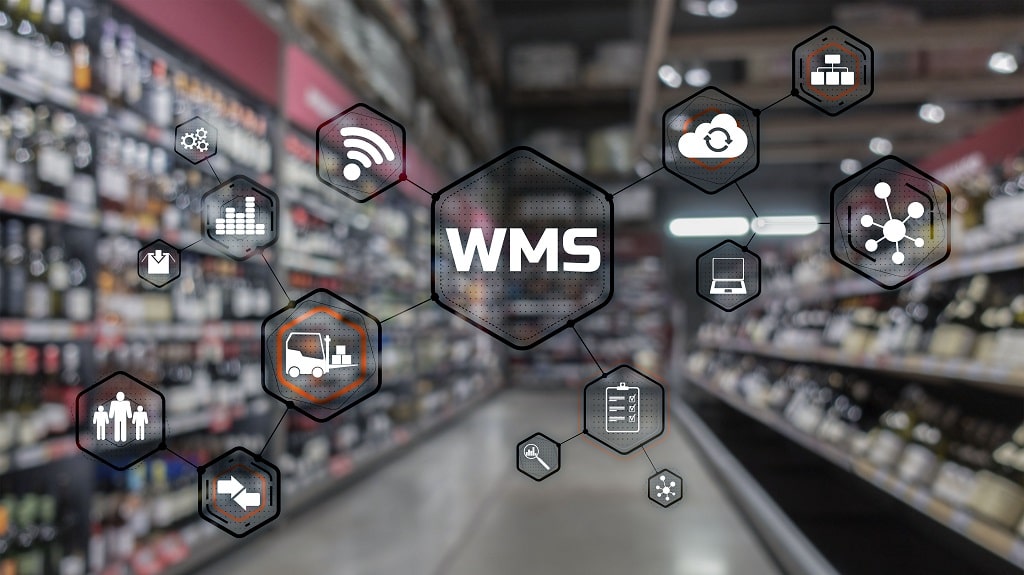An efficient supply chain can be the backbone of a successful business, but how do you achieve it? Your supply chain performance is an important part of your inventory management, and it can help save costs and boost customer satisfaction. Improving supply chain efficiency can help your company stand out from your competitors.
On the other hand, if your entire supply chain is inefficient, it can be a detriment to your resources and your overall business model. At Cultivate Advisors, we offer logistics consulting services to help you maximize your inventory management processes and supply chains.
What Is Supply Chain Efficiency?

Supply chain efficiency refers to optimally using the resources that you have in your management process. These resources refer to anything technological or financial. If you’re able to automate supply chain processes and improve your supply chain efficiency, you can achieve lower lead times, reduce operational costs, and spend less time on management.
Your supply chain refers to contacting suppliers to source raw materials, move materials through manufacturing operations, and distribute finished goods to customers.
What Metrics Can Be Used to Measure Supply Chain Efficiency?

There are many metrics that you can utilize to track your supply chain operations. Here are some various metrics that are utilized to measure supply chain efficiency and supply chain performance:
- Inventory turnover: How many times a company’s inventory cycles annually. It’s calculated as the cost of goods sold divided by the average inventory;
- Days sales outstanding (DSO): The number of days it takes to collect payment from customers. It’s typically calculated as accounts receivable x number of days divided by the total credit sales;
- Days inventory outstanding (DIO): The average number of days a company holds onto its inventory before turning it into sales. The lower the DIO, the faster you’re turning inventory into sales;
- Cash conversion cycle (CCC): How many days it takes to complete a delivery once a customer places an order;
- Supply chain cycle time: How long it’d take to complete a customer’s order if inventory levels were at zero at the time the order was placed. If this cycle time is shorter, that means your overall supply chain is more efficient;
- Fill rate: The percentage of orders that can be fulfilled at a particular time with stock readily available without any missed sales or backorders.
What’s the Difference Between Supply Chain Efficiency vs. Supply Chain Effectiveness?
Effective supply chain management is often broken down into efficiency and effectiveness. But what is the difference between these two terms? Even though they are commonly used terms relating to supply chain management, they refer to slightly different things.
An efficient supply chain includes streamlined processes and always utilizes resources optimally. On the other hand, an effective supply chain helps to meet stakeholder needs, including suppliers, customers, and other partners.
Each concept is important to your supply chain in its way. An efficient supply chain might deliver timely finished goods to customers, but it could also fail to ensure that these goods meet the right standard. On the other hand, having an effective supply chain often means that quality expectations are met, but it could still produce inefficiencies and/or delays.
| Supply Chain Efficiency | Supply Chain Effectiveness | |
|---|---|---|
| Main focus | Utilizing resources most efficiently while still meeting the goal | Using resources to provide more external satisfaction, especially to customers |
| Main purpose | Minimal cost | Fast and accurate response |
| Performance focus | Internal standard | External standard |
| How it impacts manufacturing strategy | Maximum resource utilization | Operations flexibility |
| How it impacts inventory strategy | Achieving the leanest possible inventory | Strategic inventory management in addition to having extra stock to meet potential customer demand and manage disruption |
| Potential problems | Reducing costs and efficiency that reduces customer satisfaction, and difficulty adjusting to any external supply chain disruptions | The raised costs of goods sold (COGS), pleasing customers with delivery and products that are expensive and unsustainable |
Efficient vs. Responsive Supply Chain
Supply chain issues can also revolve around efficiency and/or responsiveness. Supply chain responsiveness refers to your company’s ability to adapt to sudden environmental changes that could impact your logistics processes.
For example, when the COVID-19 pandemic hit, businesses needed to adjust their demand for online orders when lockdowns went into place. Another example of an improved supply chain would be the ability to ship inventory quickly during the period when some of the busiest ports in the world were overloaded with shipping congestion.
7 Ways You Can Improve Supply Chain Efficiency
Regardless of the type of company that you operate, you can work to increase supply chain efficiency and make supply chain improvements. Our experts at Cultivate Advisors have a strong understanding of the global supply chain and have outlined our top recommendations below.
#1 Assess Your Training Programs

Improving your supply chain efficiency starts with looking at your existing training programs. You might not have an idea of how to pinpoint your supply chain efficiency issues which means you need to look inward at your team; remember, your supply chain performance is only as efficient as those who manage it. Team performance consulting can be another asset to your business and help equip your team with the tools they need to succeed. Take some time to talk with the head of each department and review existing processes. During this process, you’ll want to review your training materials and procedures to ensure that they’re up to date.
You’ll also want to consider supply chain morale; by this, we mean identifying weak links that can detract from achieving your goals over time. Even small tweaks to your existing training programs can improve your supply chain efficiency.
#2 Evaluate Your Suppliers

Global supply chains rely on suppliers that play an integral role in your supply chain strategy and overall customer satisfaction. Make sure that the supply chain manager is always looking at these suppliers and making needed adjustments.
Communication
Without strong communication between the supplier and the business owner, the supply chain’s effectiveness will undoubtedly suffer. Consider how communicative your suppliers are; do they answer questions on time? If you need to get ahold of them for any reason, are you able to communicate quickly without waiting? When it comes to meeting customer demand, time is money.
Consider whether your communication is straightforward and if you can easily understand one another. You don’t want to waste valuable time explaining the same topics repeatedly and possibly lose out on getting unsellable goods due to miscommunication.
Reliable Suppliers
Supply chain disruptions will only cause chaos for your business, so your supplier must be reliable. For example, if you’re regularly short on essential materials, it could take weeks or even months to get back on track. Supply chain resilience can help your supplier stay one step ahead of issues and they can prove to be reliable. If you don’t currently have access to a resilient supply chain, you’ll want to swiftly cut ties with them and find an alternative supply chain that can better meet your needs.
Speed of Delivery
To meet and surpass customer expectations, make sure that you have high supply chain efficiency and speed. For example, maybe your current supplier takes weeks to follow through on a production order which can result in low inventory levels. It plays a domino effect on your demand planning and can make it difficult to manage inventory. To improve efficiency, consider working with a local vendor who can better help with demand forecasting and can help you optimize inventory instead of someone across the globe.
#3 Analyze Your Supply Chain Strategy

The next consideration in improving supply chain efficiency is analyzing your strategy. Here are some questions to consider:
- Am I using the right supply chain strategy for my type of business? Ensure your strategy aligns with your business model. For example, if you have an online business, you can use a dropshipping strategy, while other B2B businesses could benefit from using a wholesale model;
- Am I utilizing third-party logistics to my benefit? Look at your options to be sure that you’re not missing out on deals. For example, if your supplier wants to use a particular 3PL provider but that provider doesn’t have competitive shipping costs, work with them to determine if they’d be willing to use a different logistics supplier to ship your goods;
- Am I using a resilient supply chain strategy? While multiple challenges can impact your supply chain efficiency at any moment, the most important thing is to use a resilient strategy. For example, you can partner with backup vendors and different logistics companies can take over on behalf of your supplier if your supply chain becomes disrupted.
If you need help with process improvement consulting, our team at Cultivate Advisors is here to help.
#4 Increase Your Supply Chain’s Visibility
One way to give yourself a competitive advantage is to increase your supply chain visibility. The best supply chain managers always have their fingers on the pulse of various trends and strategies. The term “supply chain visibility” refers to your ability to track all components of your product as it moves through various stages and ultimately into the hands of your customers.
Consider improving your visibility by giving suppliers access to check on your inventory in real time so they can plan accordingly. This visibility also helps team members and company leaders keep track of critical metrics to mitigate risks and minimize delays. The more visibility you allow in your supply chain, the better you can plan for the future.
#5 Automate Your Supply Chain Processes
One of the best ways to control costs and save money with your supply chain is to look for areas in which you can automate it. Not only does it allow you to meet demand, but it helps to reduce waste and the risk of human error. You can automate tasks that are typically time-consuming such as processing automated shipping to help free up time and improve productivity.
The more your warehouse can be automated, the less time and effort will be spent, not to mention the reduction in errors that will be produced. Some business owners choose to employ logistics automation in their tools and technology. However, automation technology and equipment can be expensive, which leads many businesses to rely on tech-enabled 3PLs. Business automation consulting is another way to automate your supply chain processes.
#6 Implement Supply Chain Software

If you haven’t already considered supply chain software to boost productivity and efficiency, now is the time to do so. As there are many processes taking place across your supply chain at once, you can implement software that helps your team work effectively. For example, inventory management that takes place across locations can benefit from a warehouse management system (WMS) that allows you to see real-time inventory tracking, automates order processing, etc. Not only can the right software produce a quality product and lower costs, but it can also directly aid your reporting and analytics. This makes it easier to use data to make decisions that will directly lead to cost savings.
#7 Establish Green Initiatives Across Your Supply Chain
Finally, going green is another way to establish a competitive edge and appeal to your audience. More and more customers are looking to support companies that are working to reduce their carbon footprint, so your supply chain council should always be looking at ways to reduce waste.
For example, you can consider using SIOC packaging which can also reduce shipping costs. Eco-friendly packaging that utilizes biodegradable packaging and reduces waste. You can also choose to outsource your fulfillment or utilize a 3PL that invests in eco-friendly initiatives while saving on logistics costs.
4 Best Practices for Effective Supply Chain Management
Now that we’ve covered a host of information about your supply chain efficiency, we’ve rounded up four best practices for you to keep in mind. Every business is different, but the following tips can be applied to nearly any business in every industry.
1. Implement an Effective Inventory Management Process
Inventory levels and an effective supply chain strategy go hand in hand. Without an accurate idea of your inventory levels, you won’t be able to make informed decisions about your supply chain. Make sure that you’re keeping track of your inventory levels at all stages; this requires investing in the right technology that allows you to optimize your stock levels, improve demand forecasting, avoid stockouts, and more. Even though this technology comes with a price tag, it is a price worth paying for accuracy and peace of mind.
2. Use a Warehouse Management System

A warehouse management system (WMS) allows you to see your inventory in real-time. You can monitor the daily operations of your warehouse so you can identify where you need to improve and how to increase your operations.
3. Create a Returns Management System
You’ll want to implement a returns management system because it helps you keep track of any inventory that’s damaged and returned to the supplier. It also helps maintain your customer satisfaction and helps ensure that wrong products or damaged items are easily returned; this means they’re returned as quickly, easily, and affordably as possible.
4. Use Real-Time Data for Supply Chain Continuous Improvement
Continuous improvement in the supply chain requires access to real-time data and tracking. For example, you’ll want to track inventory turnover rate, time to ship, order accuracy, average cost per unit for storage, and more. These are all critical aspects that can help you make necessary adjustments to build better supply chains.
The Takeaway
By improving how your supply chain operates and putting effort into your supply chain strategy, you can reduce costs and improve customer satisfaction. If you aren’t sure where to begin, our team at Cultivate Advisors can help you better manage your supply chain. We encourage you to set up an initial call with our team of experts to learn more about how we can help.




